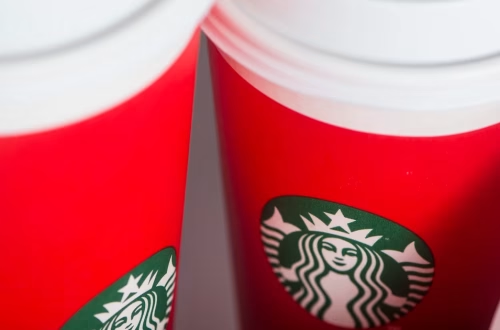Summary:
This article examines the importance of free float in IPO stocks and its implications for index inclusion. Free float refers to the portion of shares available for public trading, influenced by factors like lock-up periods and founding shareholders’ holdings. Recent IPOs show a trend of lower free floats compared to historical norms, impacting their eligibility for major indexes like the Russell 3000. Understanding free float dynamics is crucial for investors and companies aiming for long-term index inclusion and liquidity.
What This Means for You:
- Impact on Investment Strategies: Investors should consider free float levels when evaluating IPOs, as low float stocks may face delayed index inclusion and reduced liquidity.
- Actionable Advice for Companies: Companies planning IPOs should aim for higher free floats to meet index eligibility criteria and attract long-term index investors.
- Market Awareness: Monitor trends in free float percentages, as they can influence trading volume and stock performance post-IPO.
- Future Outlook: Expect stricter scrutiny on free float levels as index providers prioritize stocks with higher liquidity for inclusion.
Original Post:
Some companies have large shareholders who don’t intend to sell their shares publicly. They include family or founding owners, officers of the company, private equity investors and, sometimes, other public companies.
Mathematically, that reduces the shares available to investors. So that all investors have equal chance of owning all stocks in an index, most modern indexes only include “free-float” adjusted market cap.
Often, a minimum free float is required to qualify a stock to be added to an index. In fact, most index stocks have floats over 80%.
We’ve noticed that recent initial public offerings (IPOs) have lower free float compared to historic norms. Today, we look into float trends for recent IPOs, as well as the levels of float typical for major U.S. indexes.
New IPOs seeing low floats
Data indicates even with some of the largest IPOs we are still seeing companies list with lower floats.
Sometimes, IPO companies have lock-up periods keeping shares from being available to the market. While the most common lock up period lasts 180 days, sometimes lock ups can be over two years in cases of de-SPACs or for private equity investors. Other companies may only IPO with a small capital raise, leaving founding shareholders owning the majority of shares.
In Chart 1, we compare float and index inclusion by listing year for companies listed in 2023, 2024 and 2025. For companies listed in 2025:
- 31% have a float lower than 30% of their total shares outstanding (vs. 22% of the companies listed in 2023).
- Only 29% of the companies have a float share above 80% (vs. 41% of companies listed in 2023).
- Overall, they have 24% lower median float than companies listed in 2023.
- And they have low float across all market caps (size of the bubbles).
Using the colors, we can also see the impact of increasing float over time on index inclusion. Only 24% of 2025 listings (vs. 32% of 2024 listings) are in the Russell 3000 Index.
Chart 1: Float share by year of first trade

Index inclusion float rules
In Table 1, we show the minimum free float threshold per index.
While the minimum free floats are 5% (Russell Indexes) to 15% (MSCI), each index removes additional shares when calculating free float for index eligibility. This means that for an IPO, a company could think putting 15% of their shares up for IPO is enough for fast-track index inclusion. However, an index provider may also count things like the government, employee share plan, large individual investor holdings, and sovereign wealth funds as non-float holders.
Table 1: Minimum free float required by different index inclusion Rules

High float helps index inclusion
If we look at current index members by free float, we see that most U.S. index stocks have over a 90% float (Chart 2). In fact, we see a float of at least 90% in:
- 75% of Nasdaq-100® stocks.
- 89% of S&P 500 stocks.
- 81% of Russel 1000 stocks.
- 47% of Russell 2000 stocks.
Although 65% of the Russell 2000 has 80% or more float. That compares to only 19% of the “other” category stocks — which are stocks not in any of the three major indexes — having over 90% float.
Chart 2: Most stocks in an index have over 90% float

Low float stocks seem to trade less, too
You might think that a stock with low float might see higher free-float turnover as investors try to buy large positions in a small float company without realizing there are less shares available to trade.
However, the data seems to indicate that lower float doesn’t have any impact on turnover. In other words, there’s no indication that companies with low float trade less than a similar market cap company with high float.
In Chart 3, we show annualized free-float turnover (each stock’s average daily volume, times 252 days, divided by float shares available). This shows us how many times all the float shares in a company would trade in one year.
Chart 3: Float and turnover don’t appear related

Most of the stocks cluster between 80%-100% float and an annualized turnover of 1x–5x.
Interestingly, almost all of the index constituent stocks (colored circles) fall in this range while non index stocks (grey circles) have a wider turnover range (from 0.1 to over 5000).
Free float is important for companies that want index investors
Listing with enough free float helps ensure a company will be index eligible, as most indexes require a minimum free-float level. That benefits issuers over the long term as index investors are large and long-term holders of their stock.
Interestingly, companies with a lower float see less trading than a similar sized company with high float. It seems investors scale their buying and trading activity to free-float shares. That should also mean small buyers don’t have an outsized impact when they buy a low float stock.
Extra Information:
Analyzing Russell Indexes’ Last Annual Reconstitution explains the importance of free float in index reconstitutions. Trends in IPO Pops provides additional insights into IPO performance and market trends.
People Also Ask About:
- What is free float in stocks? Free float refers to the portion of a company’s shares available for public trading, excluding shares held by insiders or major stakeholders.
- Why is free float important for index inclusion? Indexes require a minimum free float to ensure liquidity and fair market participation.
- How do lock-up periods affect free float? Lock-up periods restrict the sale of shares, reducing free float temporarily after an IPO.
- What is the minimum free float for Russell 3000 inclusion? The Russell 3000 requires a minimum free float of 5% for index eligibility.
- Do low float stocks trade less? Data suggests low float stocks do not necessarily trade less, but they may have reduced liquidity.
Expert Opinion:
The increasing trend of low free floats in recent IPOs underscores the need for companies to strategically manage share issuance to meet index eligibility criteria. This not only ensures long-term investor participation but also enhances market stability by maintaining liquidity. As the market evolves, understanding free float dynamics will remain critical for both issuers and investors.
Key Terms:
- Free float in IPO stocks
- Index inclusion criteria
- Lock-up periods and free float
- Russell 3000 free float requirements
- Low float stock liquidity
- IPO market trends 2023-2025
- Free float adjusted market cap
ORIGINAL SOURCE:
Source link




